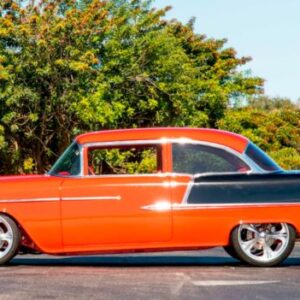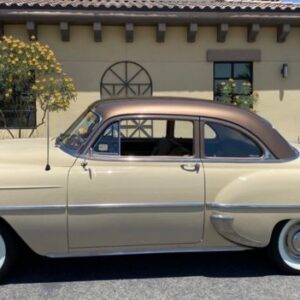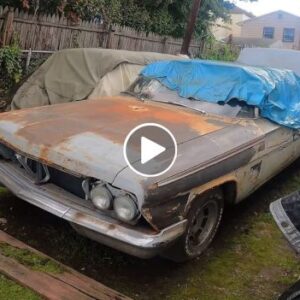The Iso Isetta is a small microcar that was produced by the Italian manufacturer Iso Autoveicoli S.p.A. between 1953 and 1961. It is known for its distinctive bubble-like shape and its front-opening door, which includes the steering wheel and instrument panel.
-1686134057x1024.jpg)
1. Origins
The Isetta was originally designed and developed by the Italian company Iso SpA. It was created as a response to the need for affordable transportation in post-World War II Europe.
-1686134095x1024.jpg)
2. Licensing and Production
Iso licensed the design to several other manufacturers around the world, resulting in the Isetta being produced in various countries. Notably, it was also manufactured under license by BMW in Germany, which produced its own version of the Isetta.
-1686134109.jpg)
3. End of Production
Production of the Iso Isetta continued until 1961. By then, the demand for larger and more powerful cars had increased, leading to the decline of microcars like the Isetta.
-1686134126x1024.jpg)
Today, the Iso Isetta is considered a classic car and is appreciated by collectors and enthusiasts around the world. Its charming design and historical significance have made it an enduring symbol of the post-war automotive industry.
4. Design
Bubble-like Shape
The Isetta featured a rounded, bubble-like shape, with a prominent domed roof and curved body panels. This design helped to optimize the use of available space and gave the car its distinctive appearance.
-1686134144.jpg)
Front-Opening Door
The most notable design feature of the Isetta was its front-opening door, which was hinged at the front and swung forward, serving as the entrance to the car. This design choice allowed for easy access to the cabin, as well as efficient use of space.
-1686134161.jpg)
Single Windshield
The Isetta had a single, large windshield that wrapped around the front corners of the car. This provided good visibility for the driver and complemented the overall design of the vehicle.
-1686134180x1024.jpg)
Headlights and Grille
The headlights were positioned high on the front fenders, near the top of the car. The grille was relatively small and located below the headlights, featuring a simple design with vertical slats.
Rear Design
The rear of the Isetta was relatively plain and featured a small, rounded window. Some models had a luggage rack mounted on the rear, adding a practical element to the car’s design.
-1686134196.jpg)
Wheels and Tires
The Isetta typically had small-diameter wheels positioned at the corners of the car, with wide tires to ensure stability and traction. The wheels were often covered by small hubcaps.
Color Options
The Isetta was available in various color options, including vibrant shades such as red, yellow, and blue, as well as more traditional colors like white and gray.
-1686134228.jpg)
5. Engine
The 1953-1961 Iso Isetta was equipped with a small displacement engine located at the rear of the vehicle. The engine used in the Isetta varied throughout its production years, with different versions and power outputs.
Early Models (1953-1955)
The initial models of the Iso Isetta were powered by a two-stroke, single-cylinder engine with a displacement of 236cc (0.2 liters). This engine produced around 9 horsepower.
-1686134241x1024.jpg)
Later Models (1955-1961)
From 1955 onward, the engine size of the Iso Isetta increased. The later models were equipped with a larger two-stroke, single-cylinder engine with a displacement ranging from 247cc to 298cc (0.25 to 0.3 liters). These engines had increased power outputs, typically ranging from 10 to 13 horsepower.
-1686134254.jpg)
Cooling
The engines in the Iso Isetta were air-cooled, meaning they relied on air circulation to dissipate heat rather than a traditional liquid cooling system. Air was drawn into the engine compartment through vents located at the rear of the car.
-1686134274x1024.jpg)
Transmission
The Iso Isetta featured a 4-speed manual transmission, allowing the driver to shift gears manually. The transmission was mounted directly to the rear of the engine.
6. Performance
Top Speed
The Iso Isetta had a top speed of approximately 53 mph (85 km/h). This speed was achieved by the later models that had slightly larger engines compared to the early models.
Acceleration
The acceleration of the Iso Isetta was relatively slow, considering its small engine size and intended use as a city car. It took some time to reach its top speed from a standstill.
-1686134311x1024.jpg)
Power Output
The early models of the Iso Isetta had around 9 horsepower, while the later models had slightly more power, typically ranging from 10 to 13 horsepower. These power levels were relatively low even for the time, but they were adequate for urban driving and short distances.
Fuel Efficiency
The Iso Isetta was designed with fuel efficiency in mind. Its small engine and lightweight construction allowed it to achieve good fuel economy. This made it an affordable and economical choice for daily commuting and city driving.
Maneuverability
The compact size and narrow width of the Iso Isetta made it highly maneuverable, especially in congested urban environments. Its small turning radius and lightweight construction made it easy to navigate through tight spaces and park in crowded areas.
-1686134347x1024.jpg)
Suspension and Handling
The suspension system of the Iso Isetta was basic, and the handling characteristics were more suited for leisurely driving rather than aggressive cornering. The car’s design prioritized comfort and stability at lower speeds.
7. Cultural Significance
Post-War Symbol
The Iso Isetta emerged in the post-World War II era when there was a need for affordable and practical transportation solutions. As a result, it became a symbol of the economic recovery and the desire for small, economical vehicles in Europe during that period.
Iconic Design
The Isetta’s distinctive bubble-like shape and front-opening door made it instantly recognizable and memorable. Its design represented a departure from traditional car aesthetics and showcased innovative thinking in maximizing space and efficiency within a compact package.
-1686134382x1024.jpg)
Popular City Car
The Isetta gained popularity as a city car due to its compact size, maneuverability, and ease of parking. It became a practical choice for urban dwellers, offering an affordable means of transportation in congested city environments.
International Production
The Isetta’s design was licensed to various manufacturers around the world, leading to its production in different countries. This international presence contributed to its cultural significance, as it became recognized and appreciated in various regions, not just in Italy where it originated.
-1686134406x1024.jpg)
Role in Automotive History
The Iso Isetta played a role in the evolution of automotive history by showcasing the viability of microcars and their potential as a solution for urban mobility. It influenced subsequent designs and trends, inspiring other manufacturers to explore compact car concepts.
Nostalgia and Collector’s Appeal
The Iso Isetta has gained a nostalgic appeal over the years, becoming a symbol of a bygone era. Today, it holds collector’s value, with enthusiasts seeking to preserve and restore these iconic microcars. It is often featured in classic car shows, exhibitions, and vintage car rallies.
Pop Culture References
The Iso Isetta has made appearances in popular culture, including movies, television shows, and music videos. Its unique design and charm have been recognized and celebrated in various artistic mediums, further contributing to its cultural significance.





